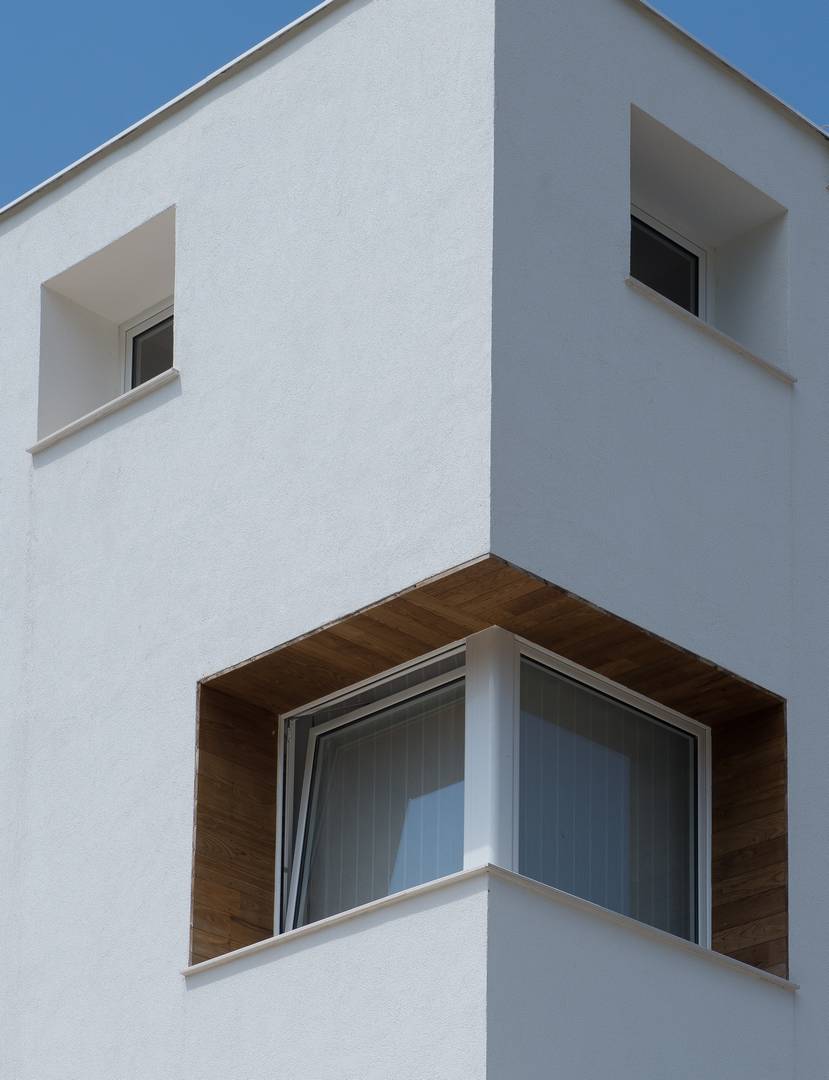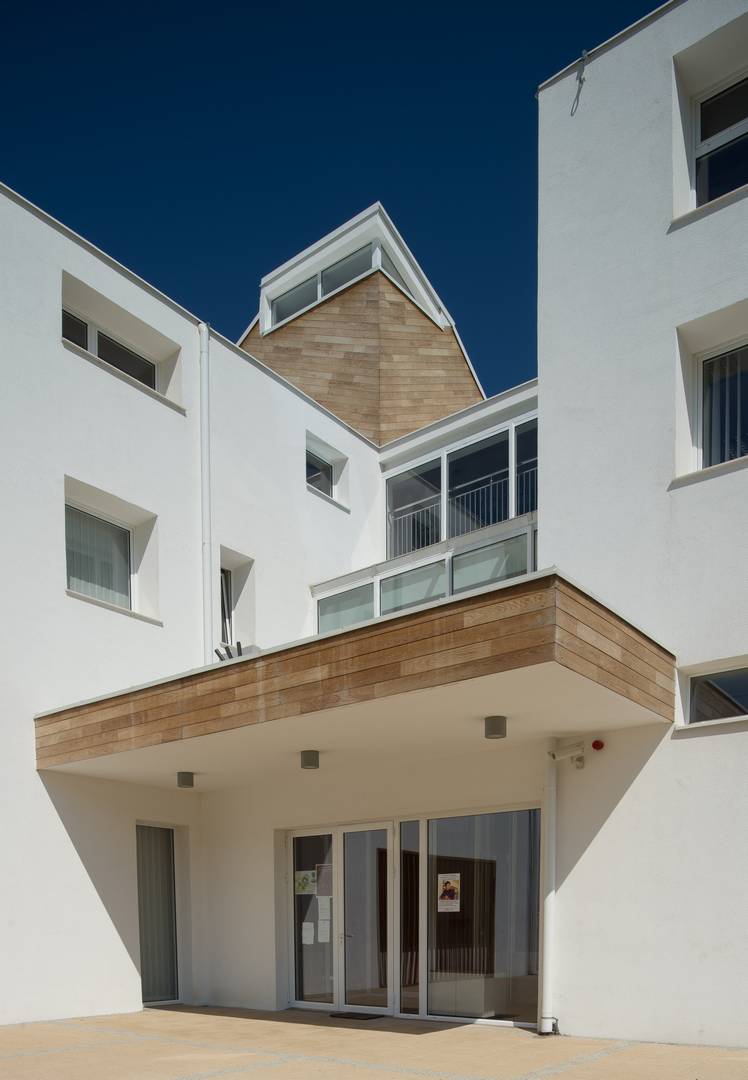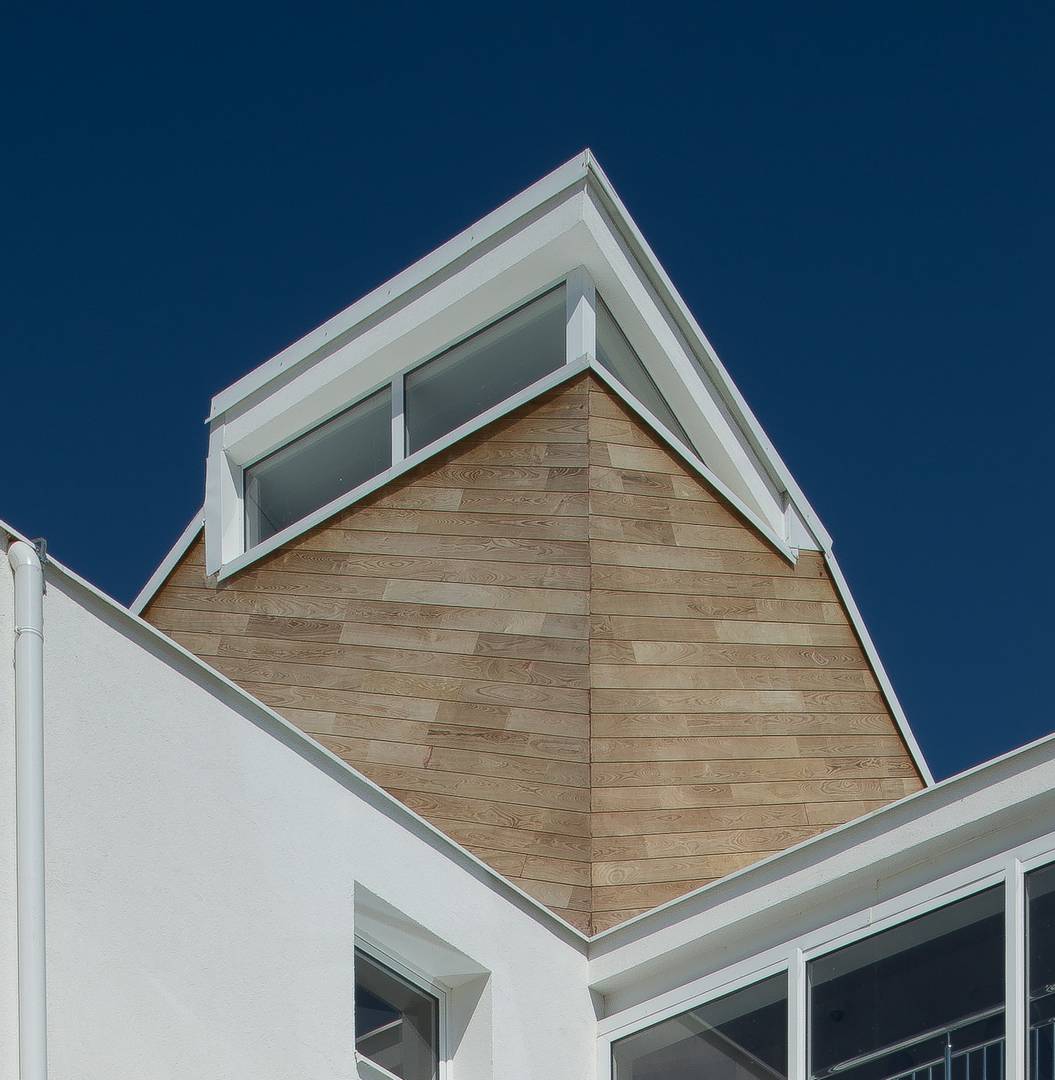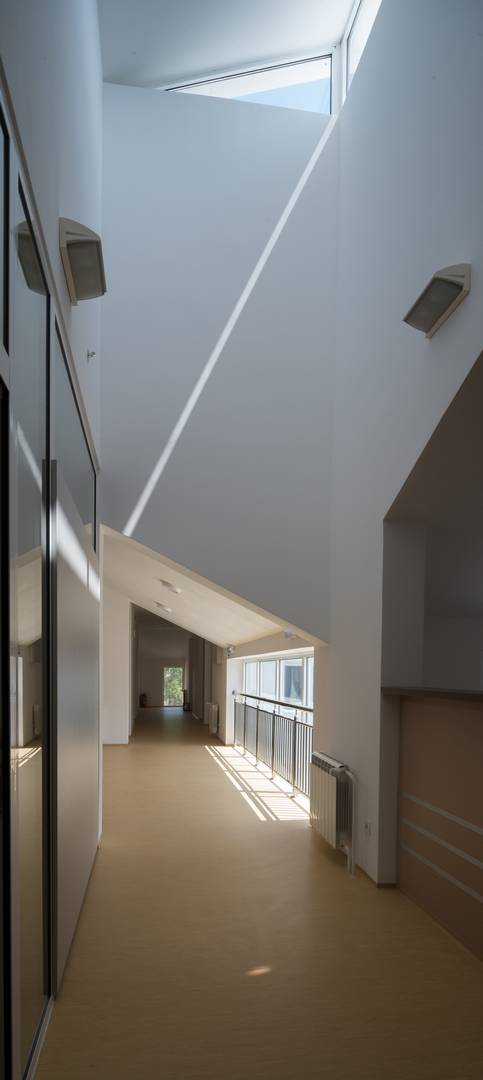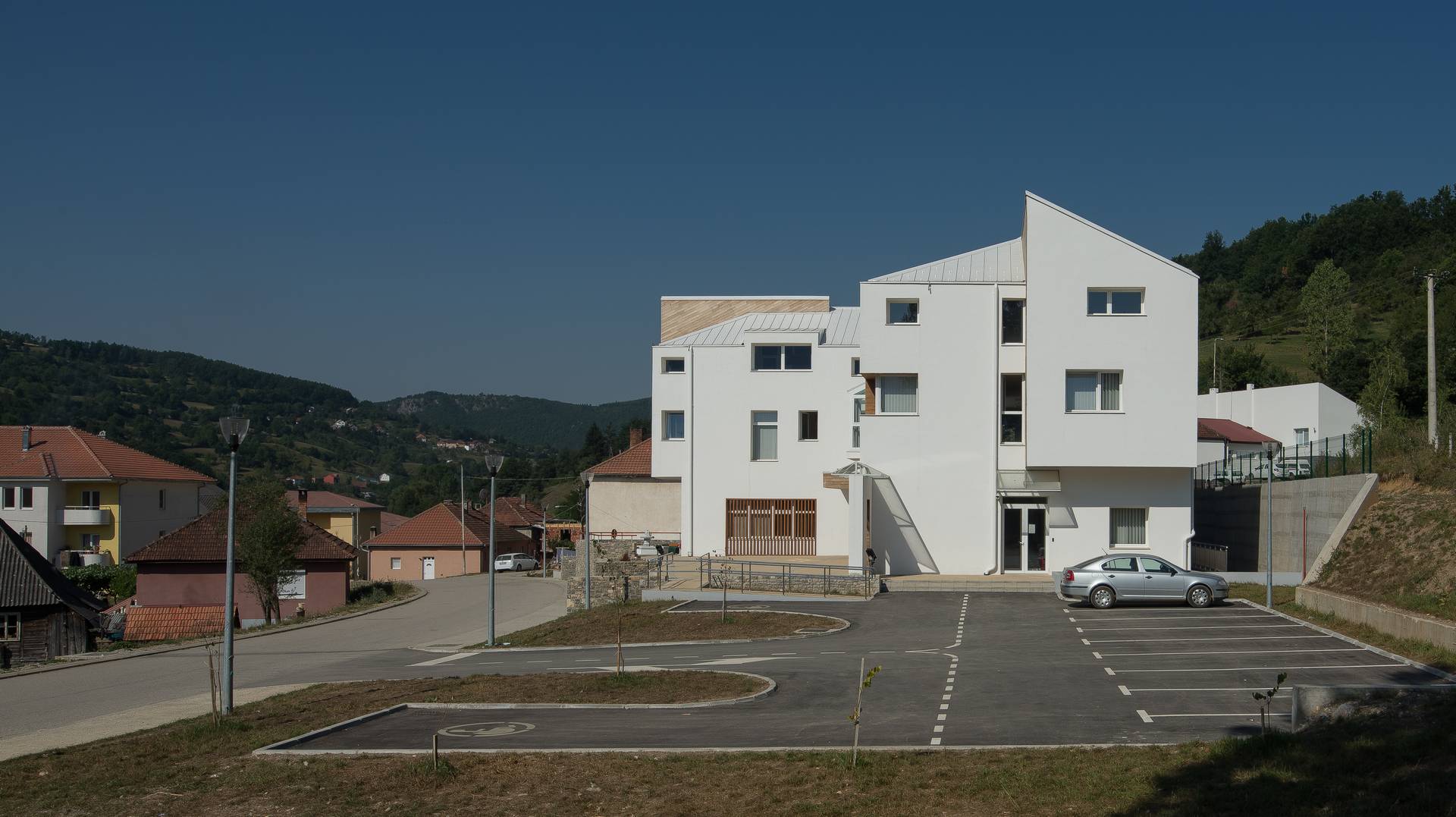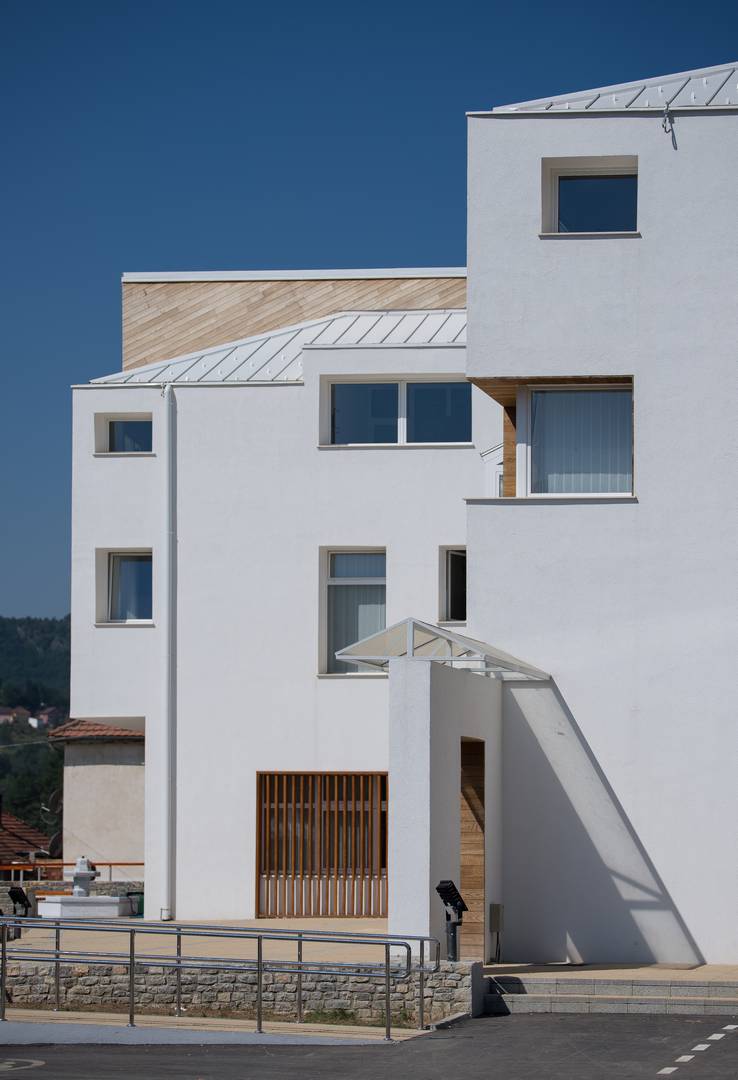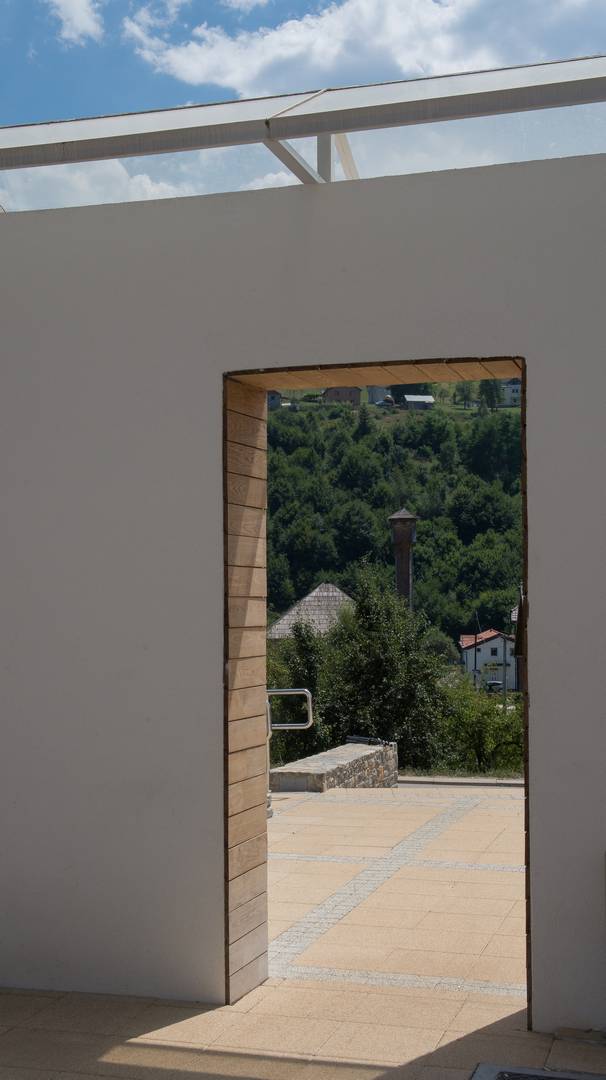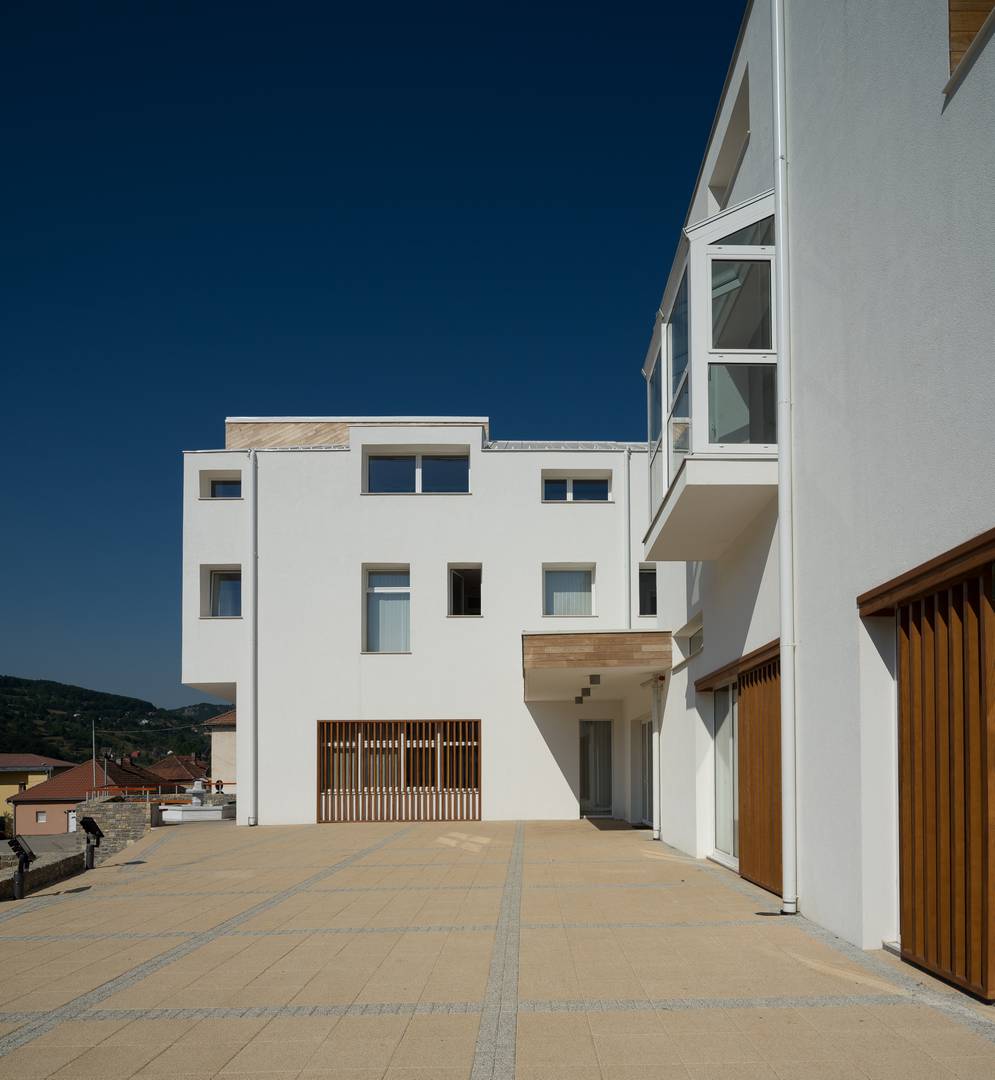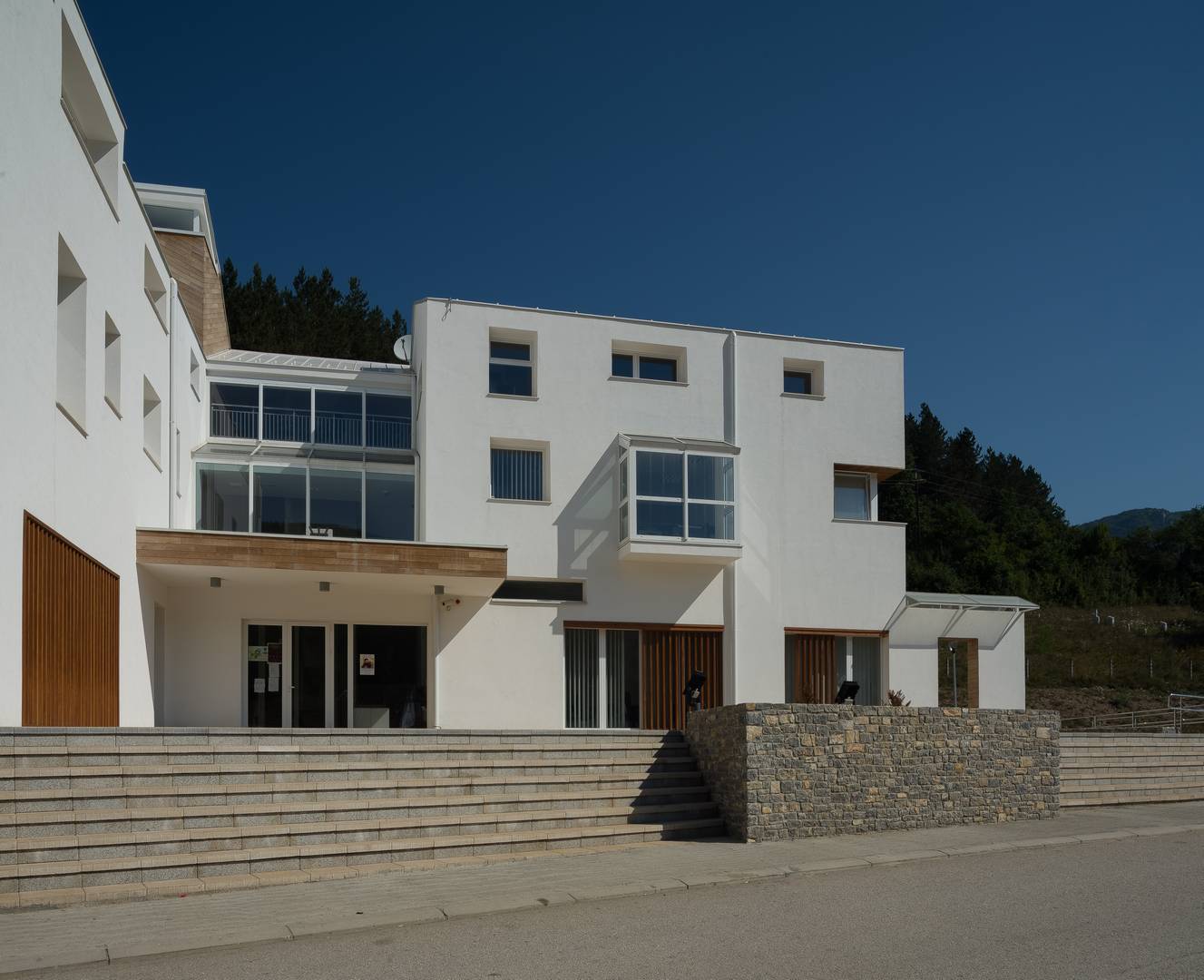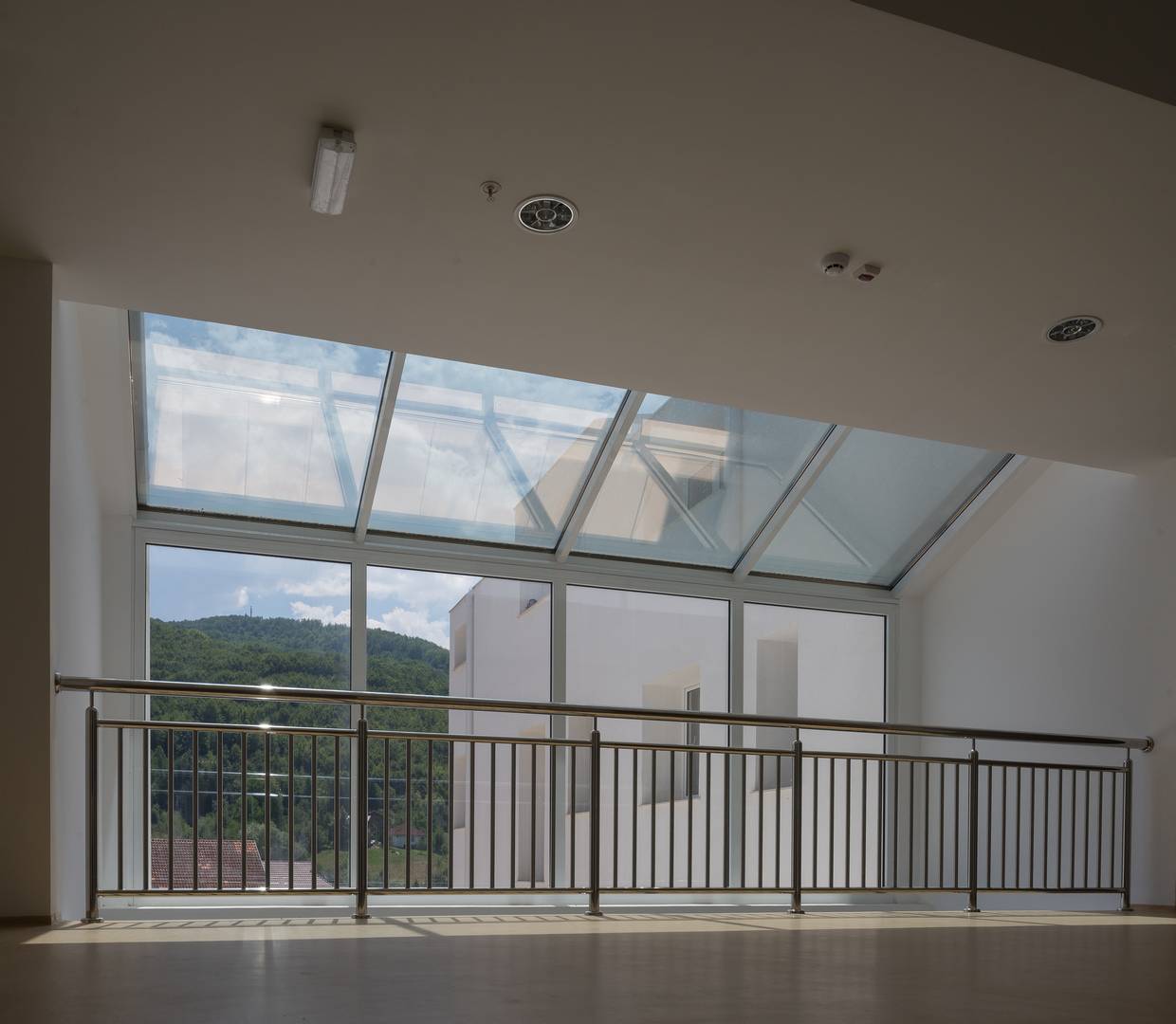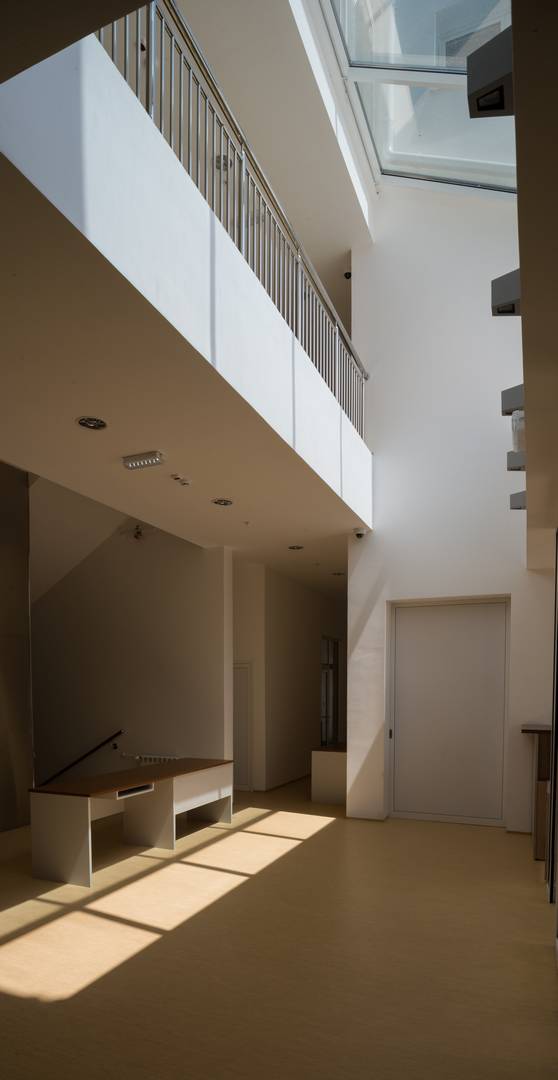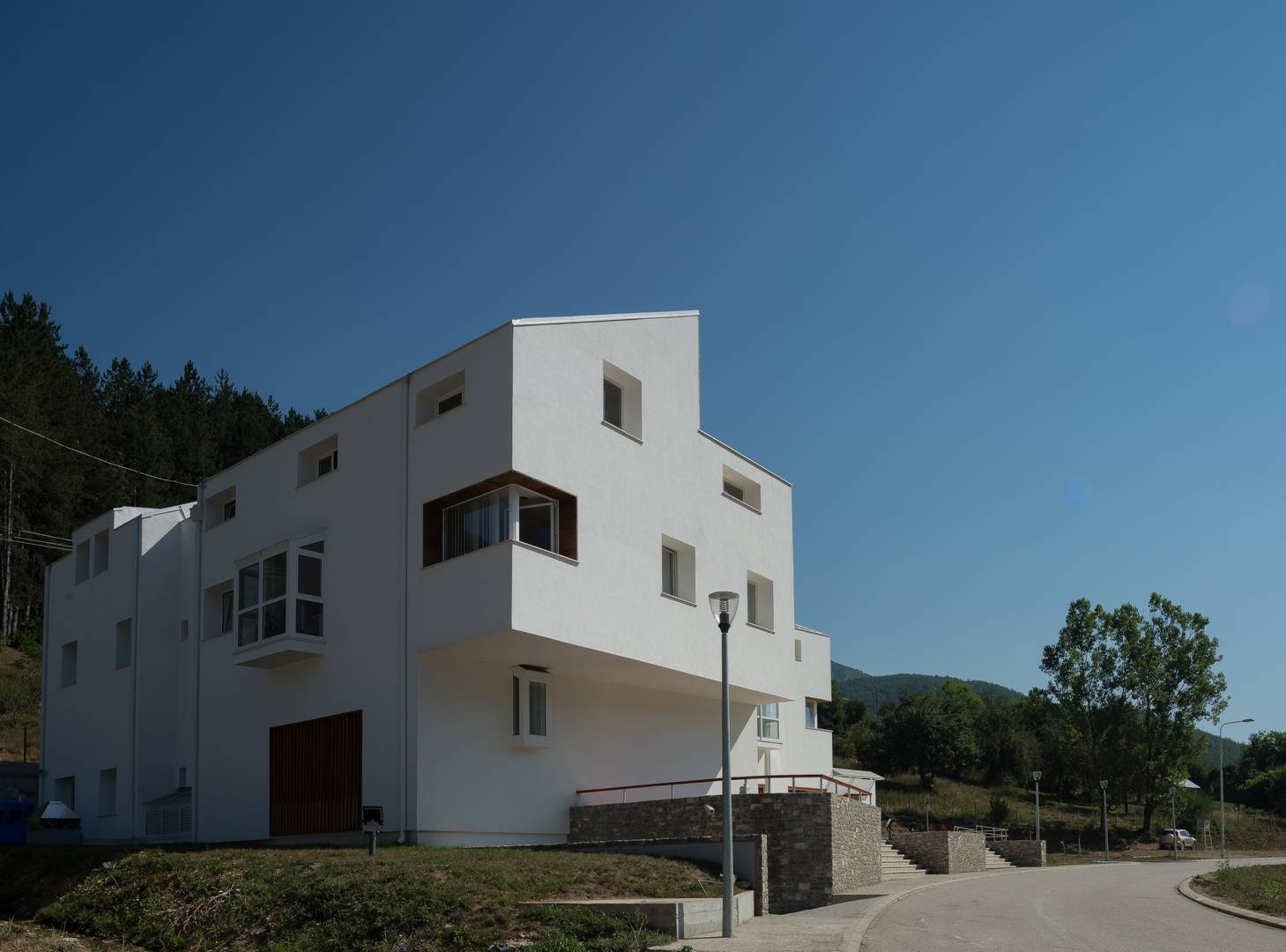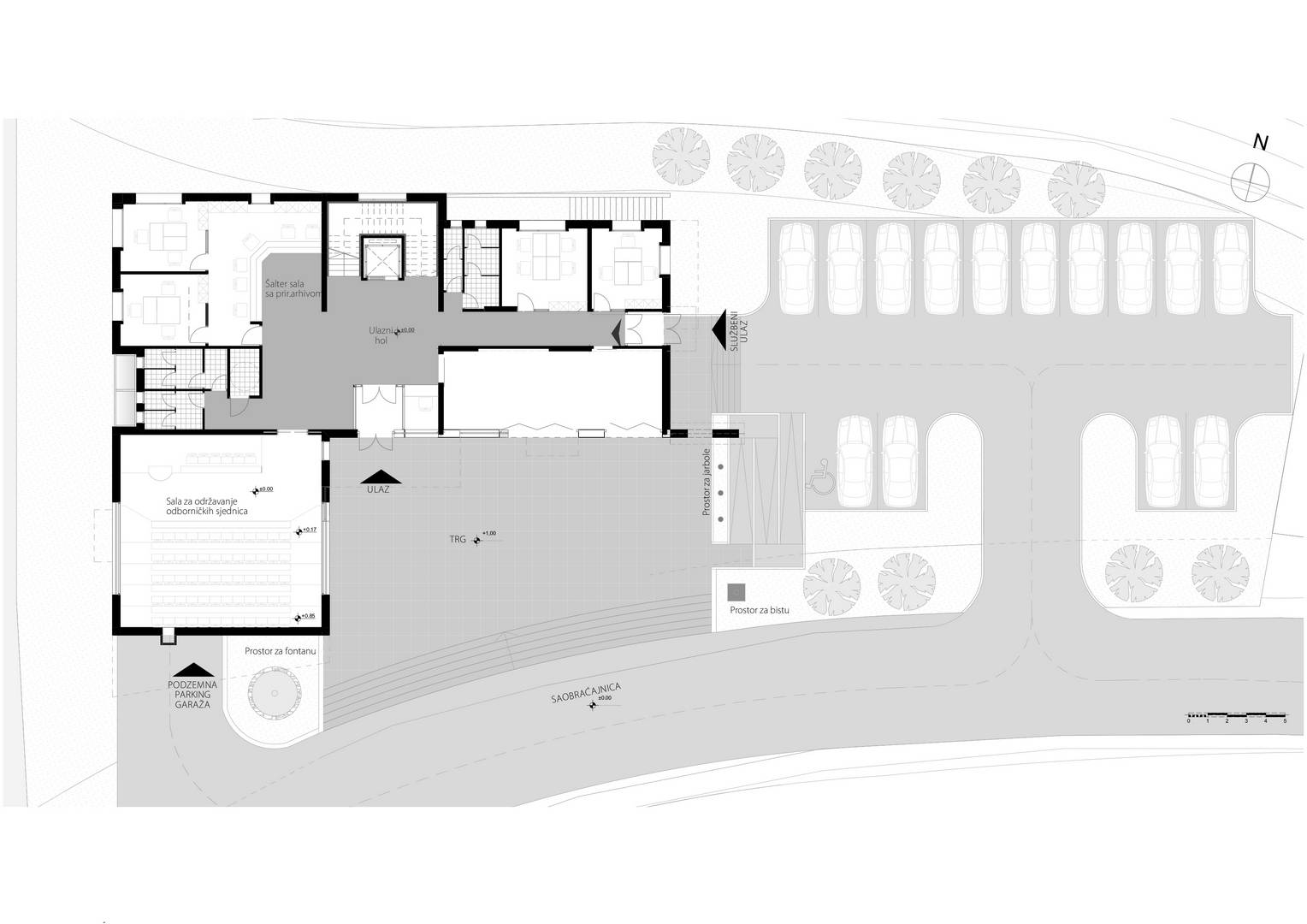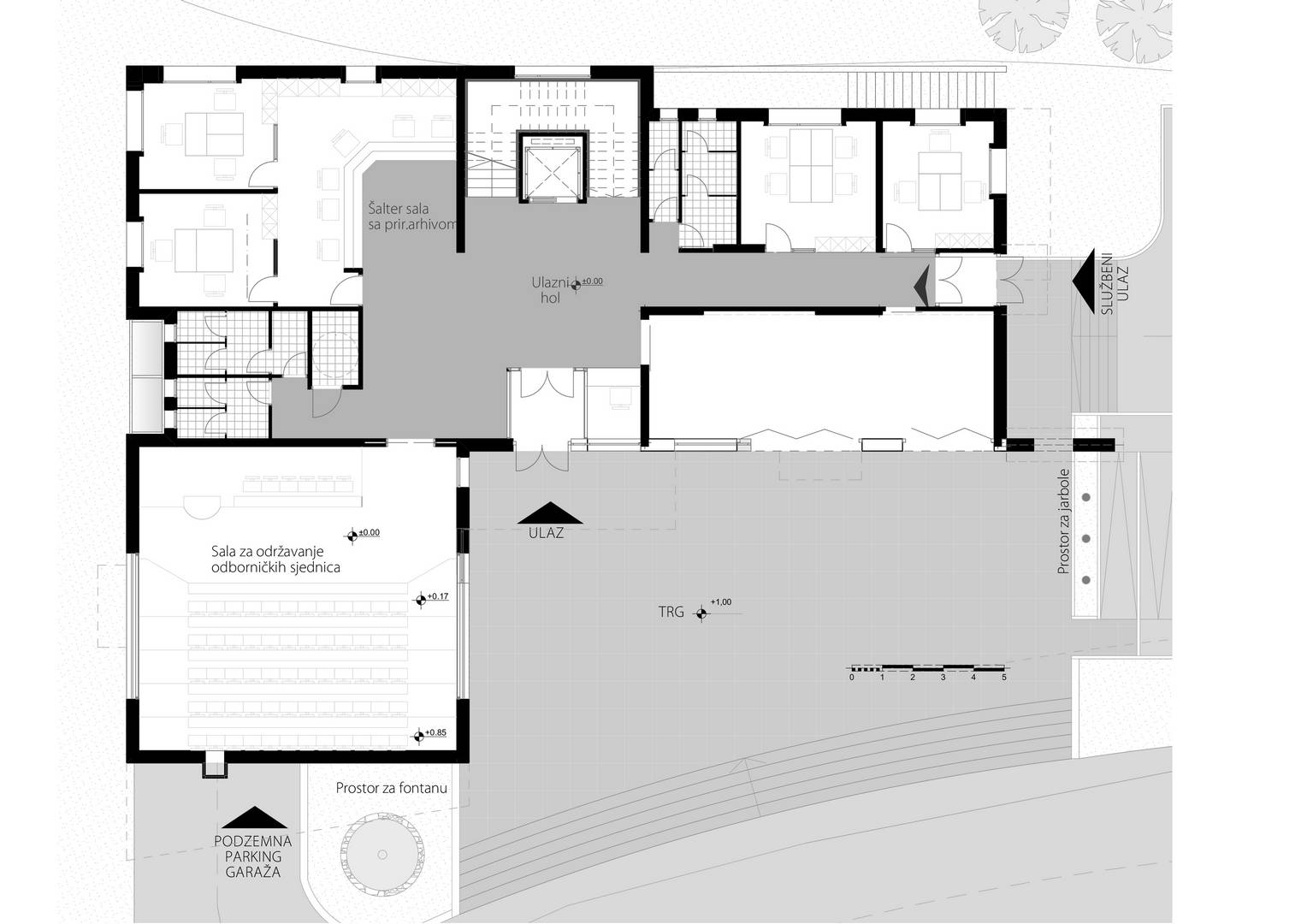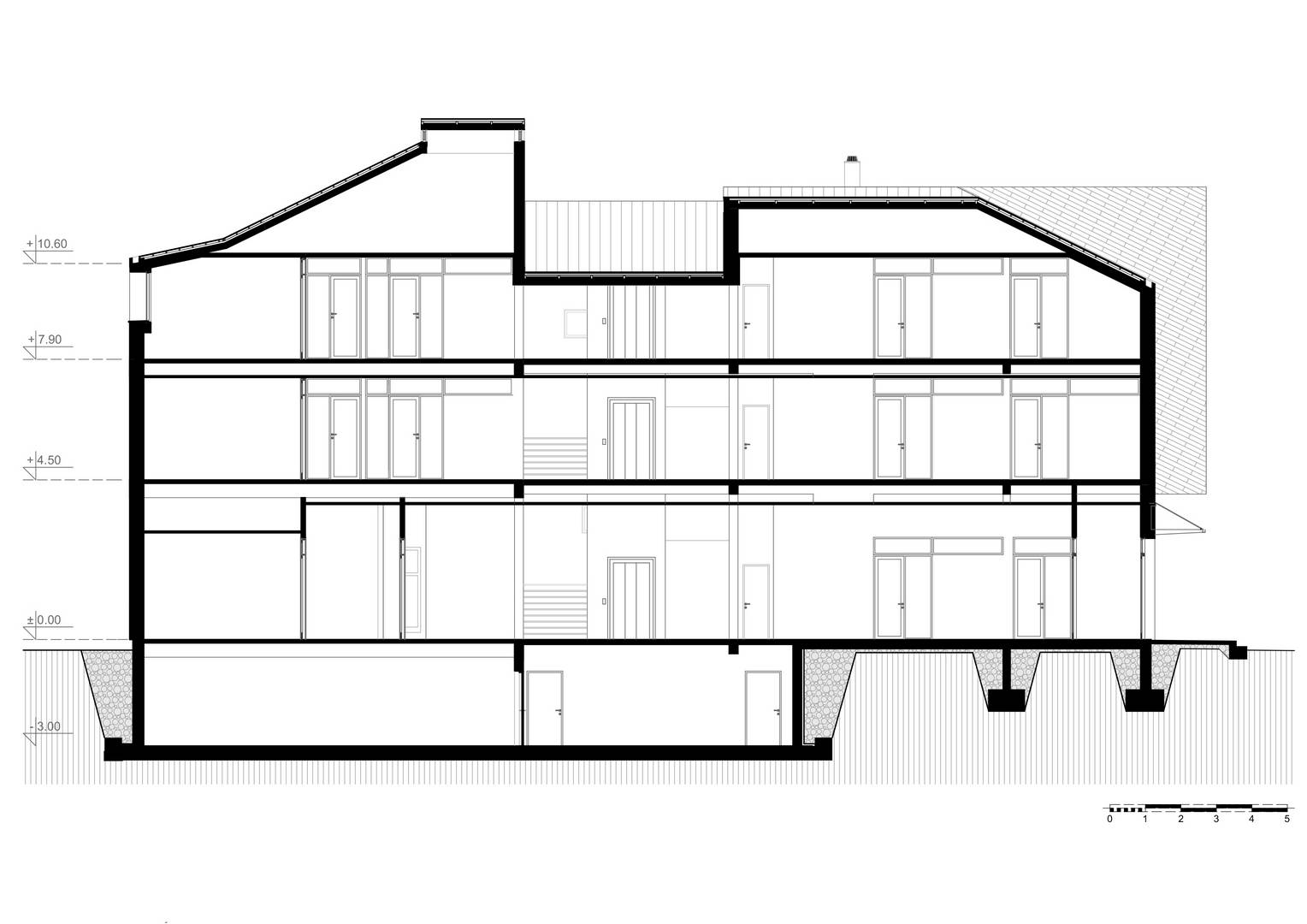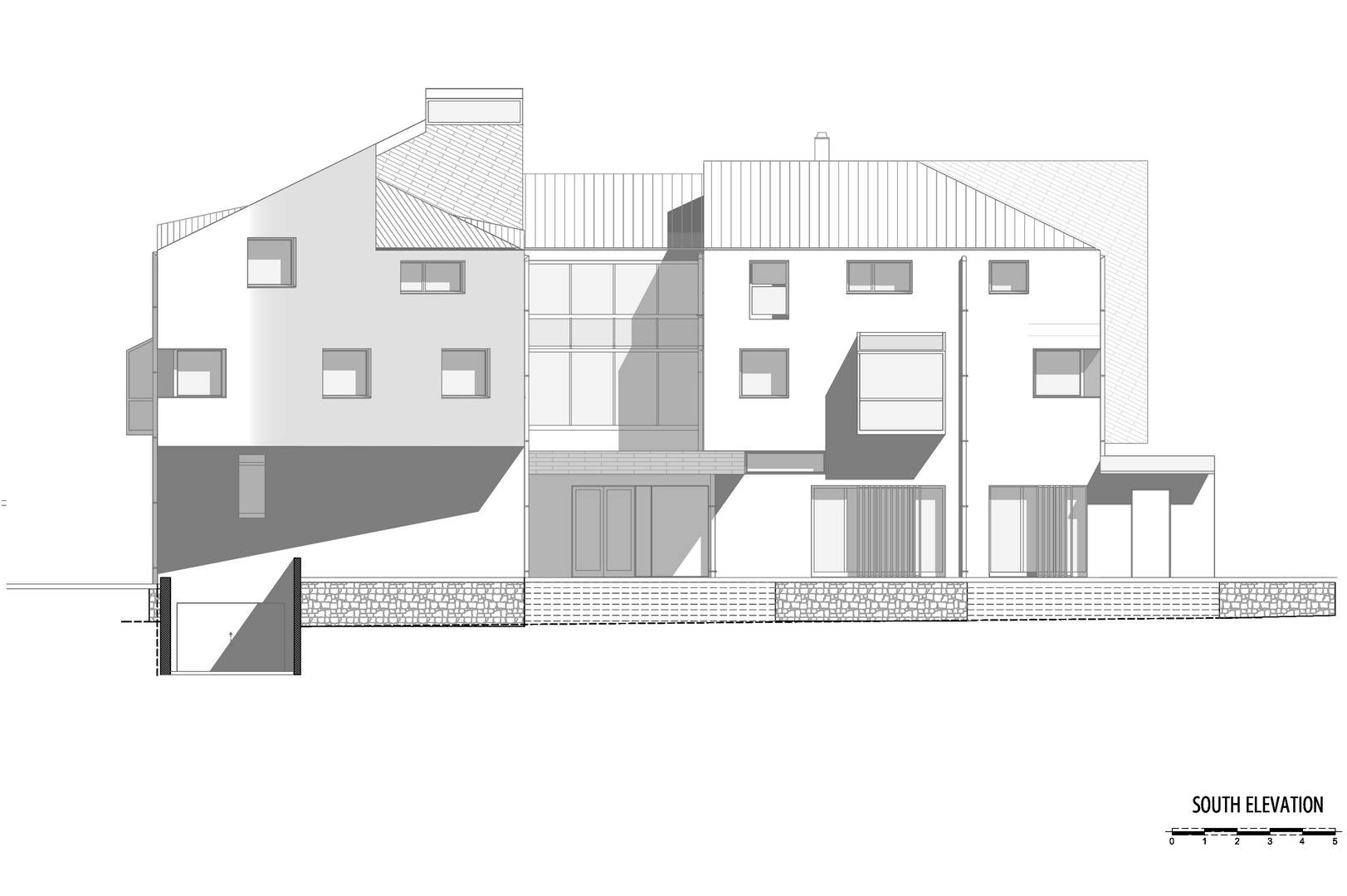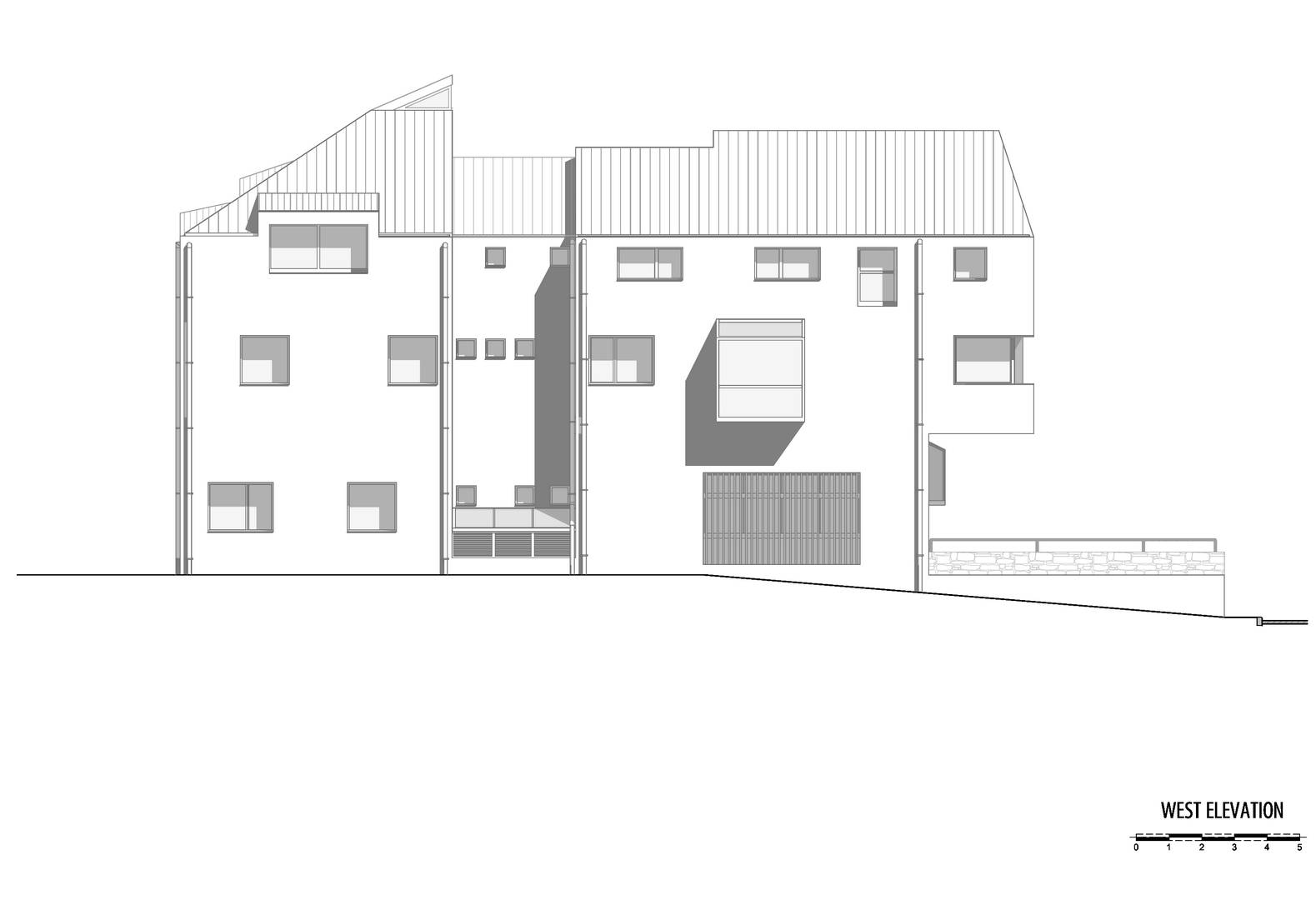Petnjica is the youngest municipality in Montenegro, which has specific urban and traditional architectural characteristics. The three-story mosque is the most important cultural and historical monument in the urban fabric. The building is located at the top of the settlement, seen from most positions, which gives it a significant symbolic character. His composition was created with the aspiration to fit into the found matrix. the layout of the building on the site, in the shape of the letter “L”, formed a square in front of the building, which allowed the gathering of citizens and various events corresponding to the multi-purpose wedding hall on the ground floor. Finding inspiration in the remains of the Bihor fortress, the building is located on a stone wall made of local materials. The architectural design reflects the transposition of inherited local architecture, created by the symbiosis of Dinaric and Oriental houses.
It is characterized by stone, white plaster and wooden cladding with doxats (traditional porches) on the facade, which give a striking shape, otherwise present in many buildings in Polimlje (Lim river valley). The slanted wooden covering of part of the facade was “taken over” from the wooden minaret of the mosque. The massive white wall has an irregular arrangement of deep windows, reminiscent of the defensive loopholes that were on the tower of the medieval fortification of the town of Bihor. In some places on the facade of the building, projecting cantilever outlets – docks – have been designed. The location of the building above the settlement, the formation of a square in front of the building, the studious placement of windows on the building enabled a visual dialogue between the interior of the building and the settlement, thus realizing the multiple relationship of the new building with the existing environment. For this purpose, the transposed motif of the gate, present in the courtyards of traditional houses, was used.


